THE THEATRE ORGAN
PART TWO: BUILDERS OF THE THEATRE ORGANS
THIS PAGE IS WRITTEN IN CONJUNCTION WITH GLEN TWAMLEY (FRIENDS OF BEER WURLITZER)
-oOo-
PAGE TWENTY-TWO:
THE CHRISTIE THEATRE ORGAN CONTINUED
THE CHRISTIE THEATRE ORGAN OF
THE GAUMONT PALACE PARIS
The Hippodrome Theatre was built at the Place de Clichy in Paris between 1897 and 1899 by a Anglo-French group and opened on 13th May, 1900 with what was called an Equestrian Pantomine. The Theatre had 8,000 in total and was used for a variety of spectacles including historical reconstructions, ballet, and between 1903 and 1907, as a circus.
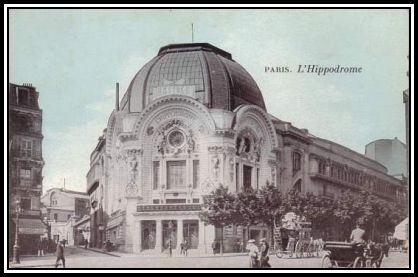 The Hippodrome Theatre during its time as a Circus.
The Hippodrome Theatre during its time as a Circus.
The Hippodrome Theatre was acquired by Leon Gaumont (1864-1946) and in December 1907 was re-opened as the Hippodrome Grand Cinema du Monde, which quickly became known as the Hippo-Palace.
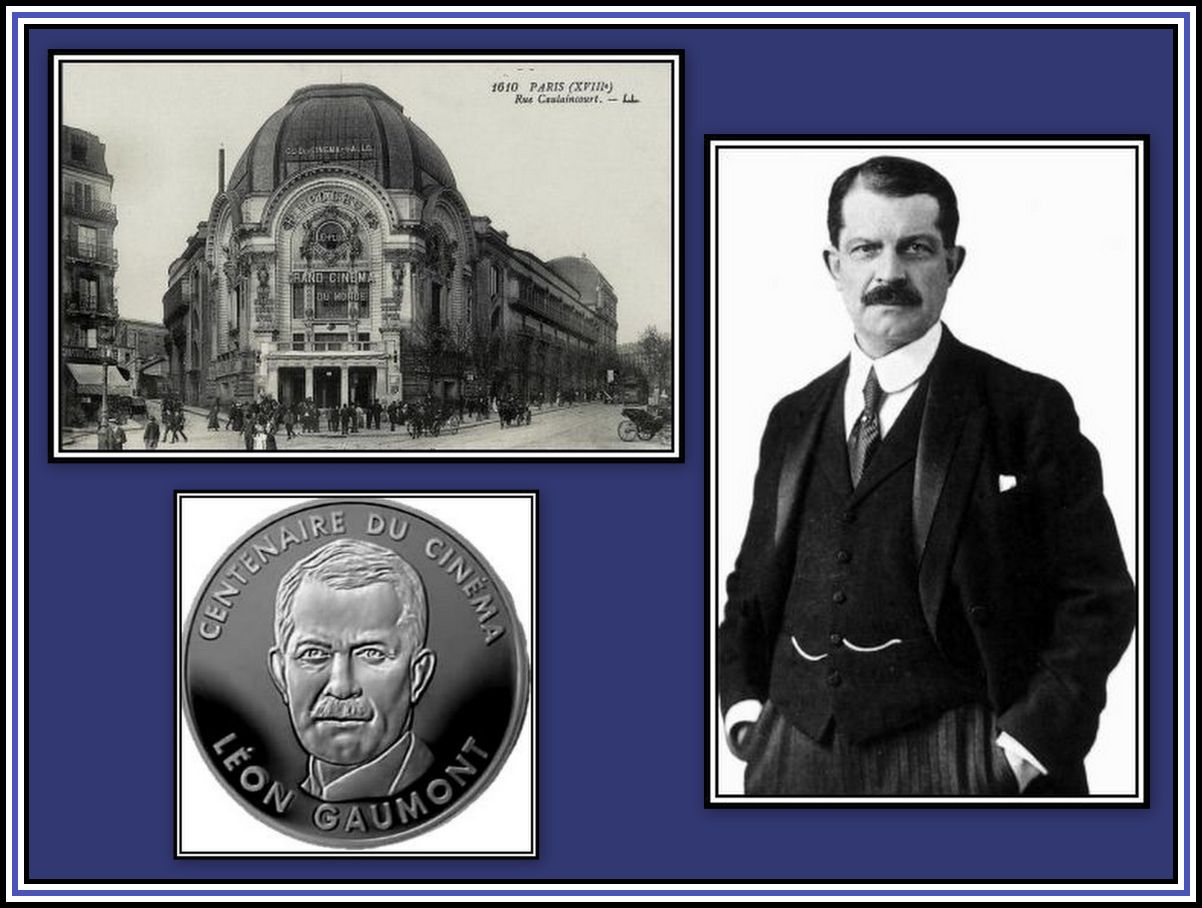 Leon Gaumont, Pioneer of the Film Industry and Founder of The Gaumont Cinema Circuits Top Left: The Hippo-Palace; Bottom Left : 100 Franc Commemorative Coin; and Right: Leon Gaumont
Leon Gaumont, Pioneer of the Film Industry and Founder of The Gaumont Cinema Circuits Top Left: The Hippo-Palace; Bottom Left : 100 Franc Commemorative Coin; and Right: Leon Gaumont
In 1911, changes were made to the Theatre and it was reopened as a cinema and named the Gaumont Palace. The Cinema had had 3,400 seats and was the largest cinema in the world at that time. In addition to screening films, the building was used for Variety and Music Hall presentations.
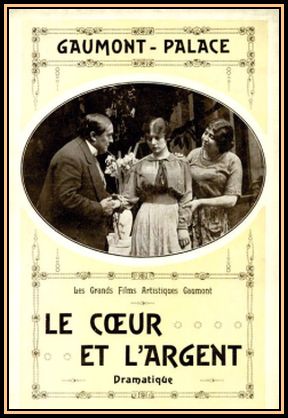 Advertisement of a film shown at the Gaumont Palace in 1912
Advertisement of a film shown at the Gaumont Palace in 1912
This advertisement was provided by Paul Bland
-oOo-
The Cinema was re-constructed in 1930 by the architect Henri Belloc who converted the building into a super cinema in Art Deco style. The Gaumont Palace offered seating in the orchestra and in two balconies and was equipped with a Christie Theatre Organ (Job Number: 2821).
-oOo-
Prior to the introduction of The Christie Theatre Organ in 1930 to the Cinema, two other organs had been installed earlier.
The first organ to be installed was in 1913 and was a Cavaillé-Coll ‘Grand church organ’. Astride Cavaillé-Coll (1811-1899) was considered to be the premier organ maker of his day and pioneered a number of innovations in organ building. His company built a number of organs including those installed in Paris at the Opera, Opera Comique, Cirque d’Hiver and Basilique Ste-Clotilde. He also built an organ for the Rialto Cinema in Coventry Street in London, but perhaps his most prestigious work was the reconstruction and improvement done on the organ built by Francois Henri Clicquot (1732-1790) for L’Eglise Ste-Sulpice in Paris. It is said that this organ is maintained exactly as M. Cavaillé-Coll had left it.
I was fortunate enough to have heard the organs of Ste-Sulpice and Ste-Clotilde and to view them at close proximity with their organists. And I can assure the reader that each produces a magnificent sound.
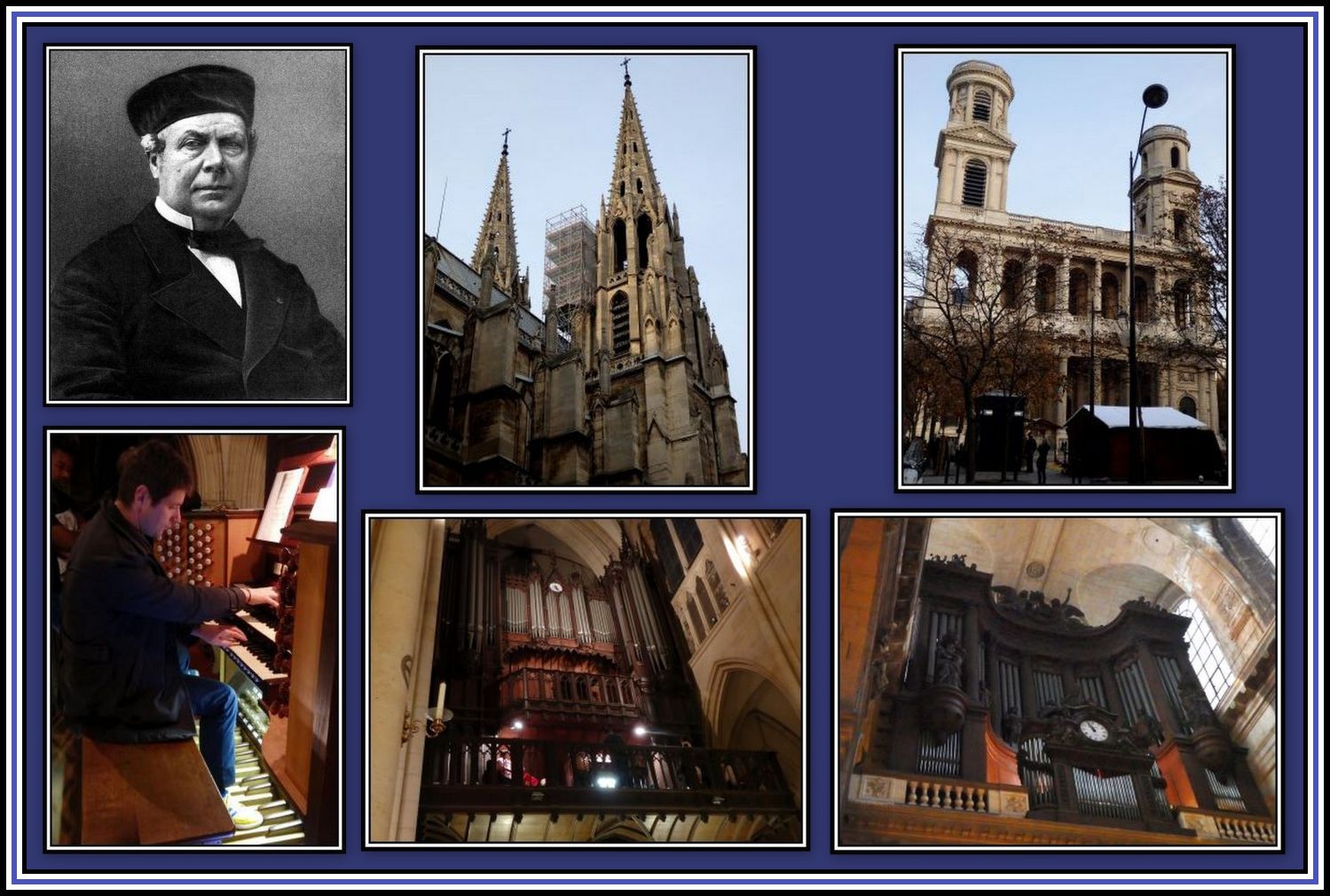 Top Left: Astride Cavaillé-Coll; Middle: Basilique Ste-Clotilde; Top Right: L’Eglise Ste-Sulpice; Bottom Left: Olivier Penin, organist at St. Clotilde; Middle: Organ of the Basilique Ste-Clotilde; & Bottom Right: Organ of St. Sulpice
Top Left: Astride Cavaillé-Coll; Middle: Basilique Ste-Clotilde; Top Right: L’Eglise Ste-Sulpice; Bottom Left: Olivier Penin, organist at St. Clotilde; Middle: Organ of the Basilique Ste-Clotilde; & Bottom Right: Organ of St. Sulpice
Click here to hear Olivier Penin play the Organ of the Basilique Ste-Clotilde
Click here to hear the Organ of L’Eglise Ste-Sulpice
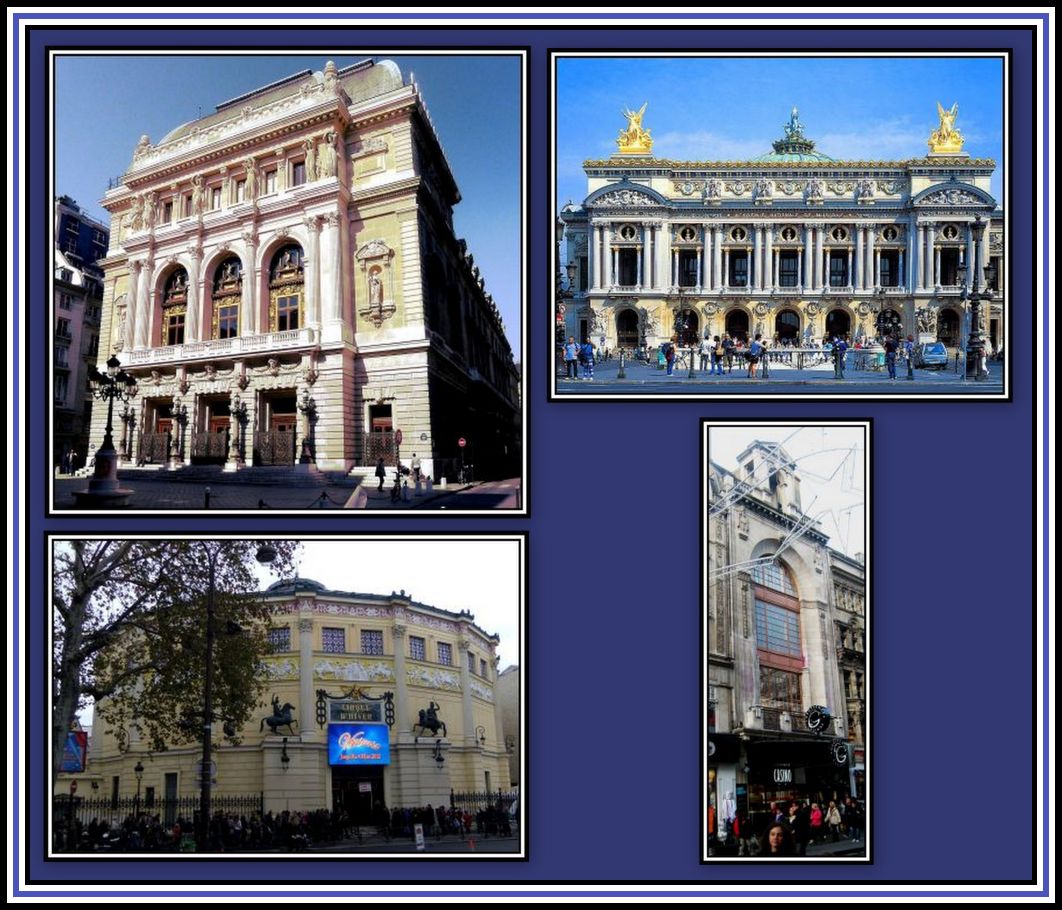 Top Left: Opera Comique Paris; Top Right: Opera Paris; Bottom Left: Cirque de Hiver; Bottom Right: Rialto Cinema (now a Casino) London
Top Left: Opera Comique Paris; Top Right: Opera Paris; Bottom Left: Cirque de Hiver; Bottom Right: Rialto Cinema (now a Casino) London
The first Organ is believed to have been a second-hand church organ since there is no reference to it in the builder’s Opus List. There is also no specific reference to this organ after 1914 (Mr. Ian McIver, personal communication).
-oOo-
In 1919, the Gaumont Palace was refurbished and the second organ was installed, which was built by The Aeolian Company. Again, little is known of this organ since it is not listed in the company’s Opus List. What is known is that this organ was played by several American Organists during its time in the Cinema.
One of the most prestigious organs built by The Aeolian Company was the Kathleen McClendon Organ installed at Duke Chapel at Duke University in Durham, N.C. The organ was built in 1932 and was the last major instrument built by the company before it merged to form the Aeolian-Skinner Organ Company.
Click here to hear the Organ of Duke Chapel
-oOo-
Finally, a 4-manual, 15-rank Christie Theatre Organ was installed at the Gaumont Palace. The Cinema was temporarily closed during its installation, but once the process was complete, it was reopened to the public in December 1931 with Philip Dore at the organ.
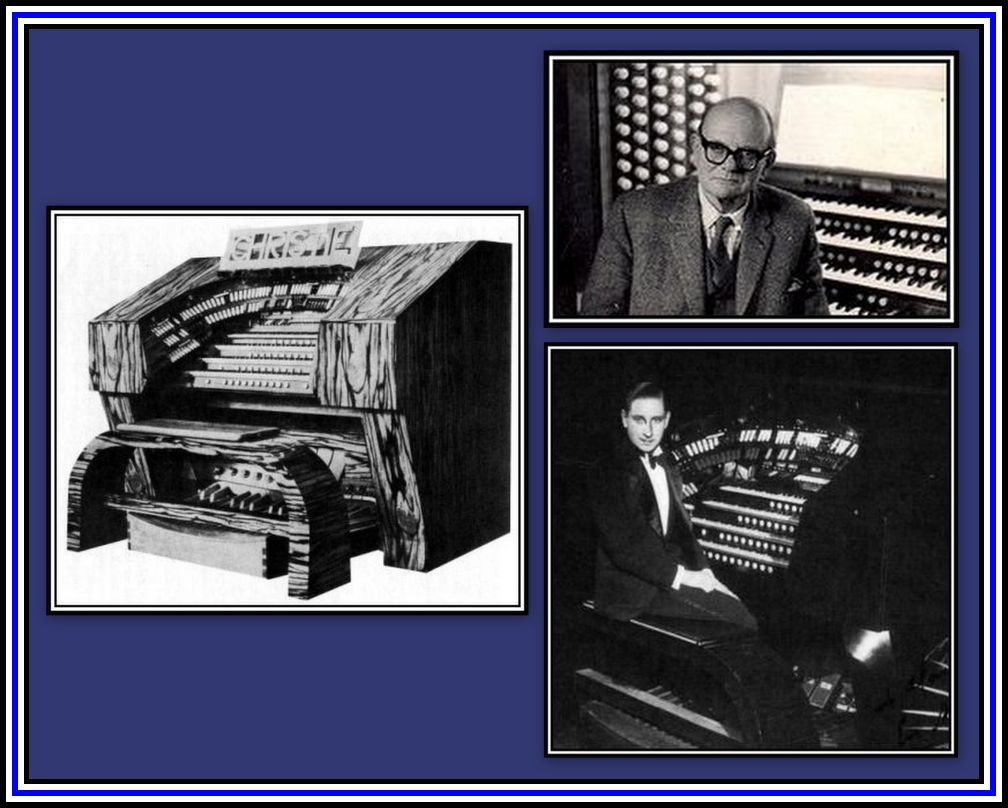 Left: The Christie Organ Console with 4 Manuals; Upper Right: Philip Dore; Lower Right: Tommy Desserre at The Christie Theatre Organ of the Gaumont Palace in 1932
Left: The Christie Organ Console with 4 Manuals; Upper Right: Philip Dore; Lower Right: Tommy Desserre at The Christie Theatre Organ of the Gaumont Palace in 1932
-oOo-
Although Mr. Tommy Desserre often played the organ of the Gaumont Palace, unfortunately I have been unable to find any of his recordings.
-oOo-
I have learned that the organist, Robin Richmond (1912-1998), went to Paris and recorded The Christie Organ of the Gaumont Palace for the BBC Radio 2 Programme, The Organist Entertains, which he created in 1969 and was the presenter until 1980. Unfortunately, I am told that The Organ was struggling by this time although I still find it magical. However, Robin Richmond, being the artist that he was, was able to coax some most agreeable sounds from it. Here is one of the pieces that he recorded:
Robin Richmond playing a selection including
Pigalle – Vous Qui Passe Sans Ma Voir – Que Rest-t-il de nos armours? – Sous Les Ponts De Paris
-oOo-
The interior of the Gaumont Palace was renovated in 1954 employing the plans of the architect Georges Peynet while the exterior was renovated a year later.
These modifications including some to the screen in order to accommodate the various widescreen processes that had recently been developed. Between 1973 and 1974, special projectors and further screen modifications were installed for the screening of films filmed in Cinerama.
-oOo-
I remember seeing the Gaumont Palace from the outside when I first went to live in Paris and was very impressed with its exterior form. I recall that it was a huge building on the north side of the Place de Clichy. Sadly, I never went inside. The Cinema screened French films and Version Francaise of any foreign films shown (i.e. dubbed in French). It closed in 1972 and I remember reading the outcry from certain devotées who decried this action. Worse was to follow once its demolition was announced. Despite protestations plans went ahead for the area to be cleared and a hotel to be built on the site. It was a tragic end for such a majestic edifice that had an illustrious history. Today, the space once occupied by the Gaumont Palace is now home to the Murcure Hotel, which is part of the Ibis Group.
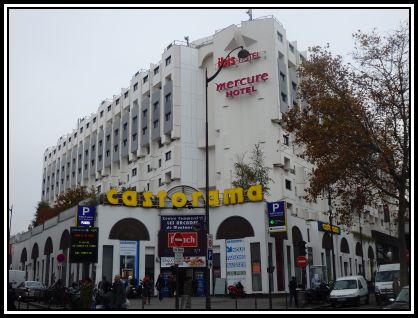 Murcure Hotel, Palace de Clichy
Murcure Hotel, Palace de Clichy
Part of the ground floor and basement of the new building is taken up by Castorama, which is a Do-It-Yourself (DIY) and Home Improvement store.
 Castorama at the Place de Clichy
Castorama at the Place de Clichy
In addition, the basement also houses a Flunch Restaurant, one of the many cafeterias in the chain found throughout France. Flunch apparently is formed by the combination of the F from French with Lunch.
-oOo-
Just prior to the demolition was to begin, The Christie Theatre Organ was removed and saved from its own destruction. Today the Organ is installed in one of the erstwhile Pavilions from Les Halles de Paris, the former wholesale market, which had been moved in 1974 to the Parisian suburb of Nogent-sur-Marne and renamed Pavillion Baltard. Today, Le Pavillion serves as a concert hall.
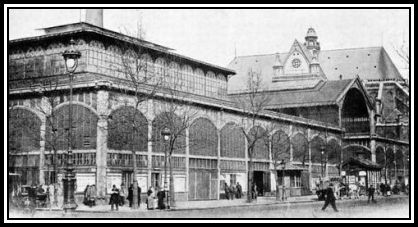 Un Pavillion des Les Halles de Paris, built in 1850s by the architect Victor Baltard (1805-1874)
Un Pavillion des Les Halles de Paris, built in 1850s by the architect Victor Baltard (1805-1874)
The Pavilion at Nogent-sur-Marne and now named Pavillion Baltard
The Christie Theatre Organ of the Gaumont Palace (Job Number: 2821) at the Pavillion Baltard
-oOo-
Bernard Dargassies playing The Christie Organ of the Gaumont Palace at the Pavillion Baltard
-oOo-
Click here to watch a video that allows the viewer to see the interior of the Pavillion Baltard and to hear the wide range of sounds made by The Christie Organ of the Gaumont Palace. Its range of percussion may be heard at ~ 4 minutes onwards. The video includes a look at the various ranks and also allows the viewer to see how the sound of smashing plates is reproduced!
-oOo-
La Place de Clichy is of interest since it is the meeting point of four Arrondissements, the 8th, 9th, 17th and 18th. It is probably as busy as it was when the Gaumont Palace was part of the quartier. At its centre is a statue of Bon-Adrien Jeannot de Moncey (1754-1842), who was the 1st Duke of Conegliano, Marshal of France (Maréchal de France) and a soldier of note during the Revolutionary (1792-1802) and Napoleonic Wars (1802-1815).
Not far from La Place de Clichy, on the northern side of the Boulevard de Clichy, is a new multiplex, Pathé. I do not doubt for a moment that the seats here are comfortable and that one can find delicious sweetmeats at the kiosk in the foyer, but despite these modern comforts, I suspect that those who remember the Gaumont Palace would still prefer it to this modern counterpart.
—ooOoo—
Quintin Maclean playing Rhapsody in Blue
——oooOOOooo——
ACKNOWLEDGEMENTS
I would like to thank Mr. Paul Bland for his contributions to this piece.
——oooOOOooo——
——oooOOOooo——
——oooOOOooo——
Click here to return to PART ONE:
INTRODUCTION TO THE ORGAN
——oooOOOooo——
Click here to return to PART TWO:THE THEATRE ORGAN HOME PAGE
——oooOOOooo——
——oooOOOooo——

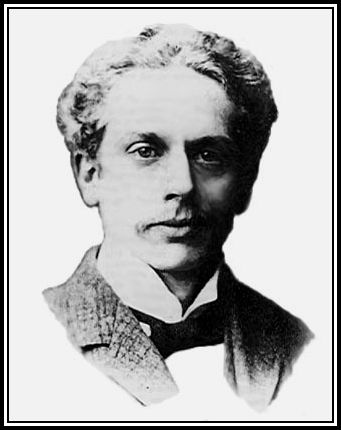
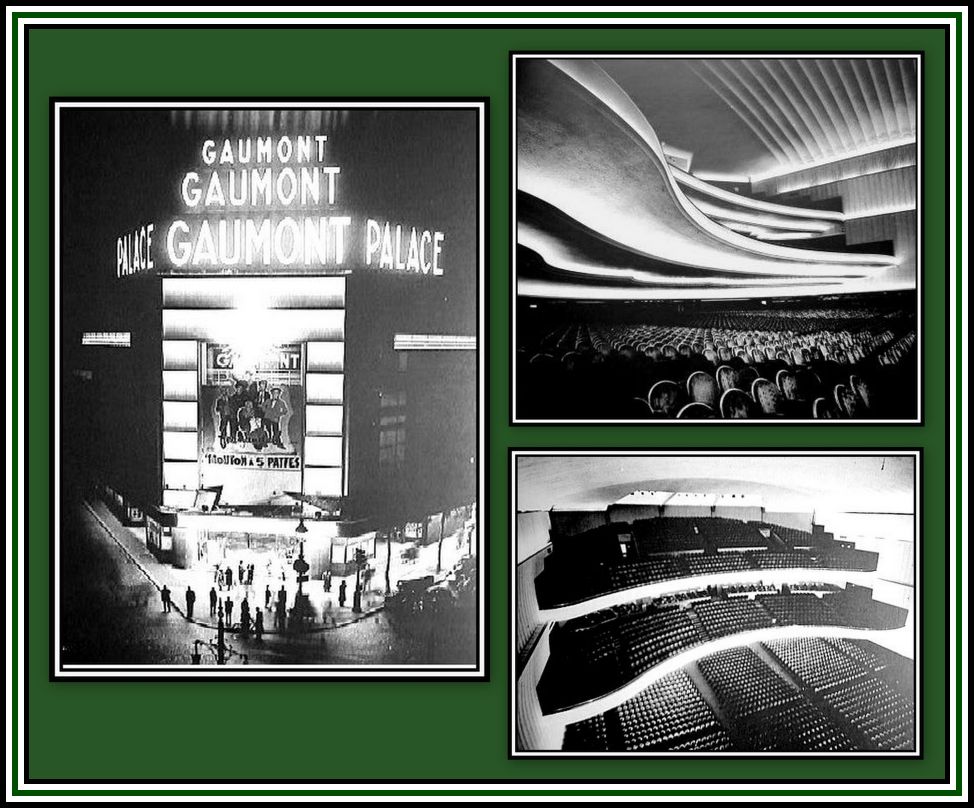
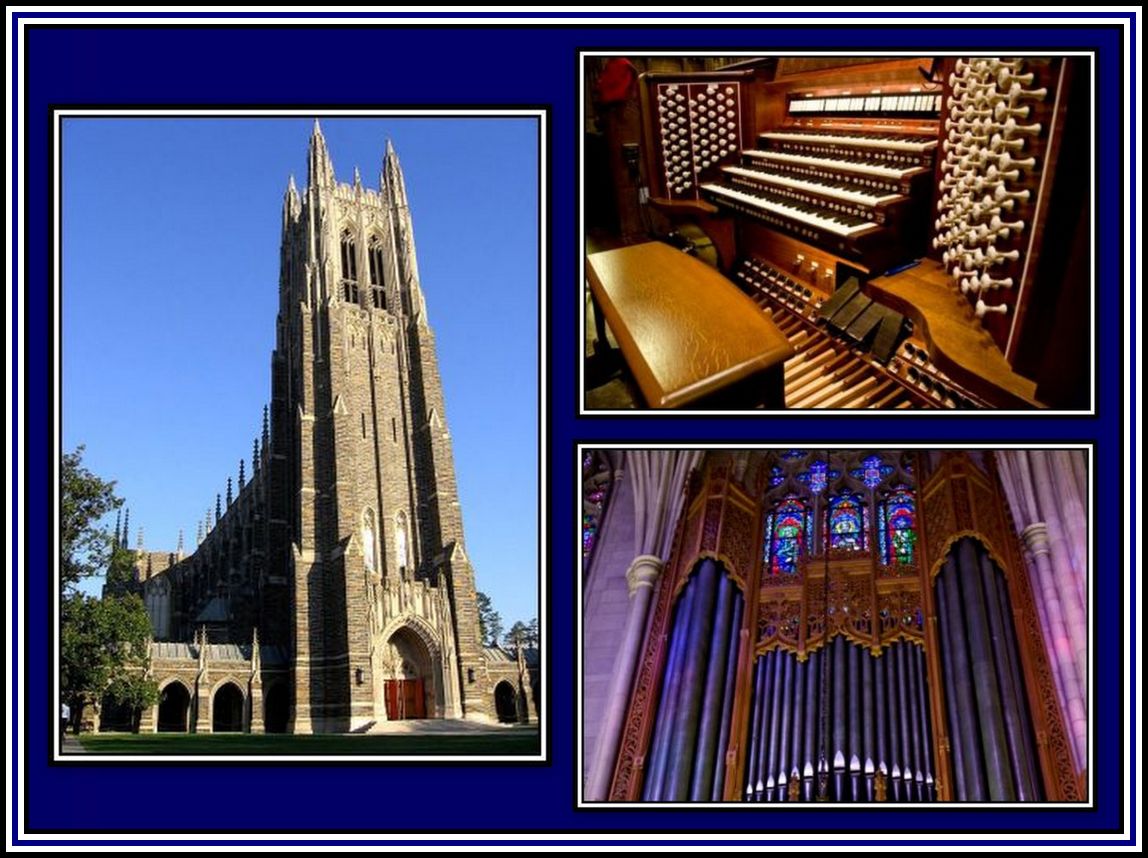

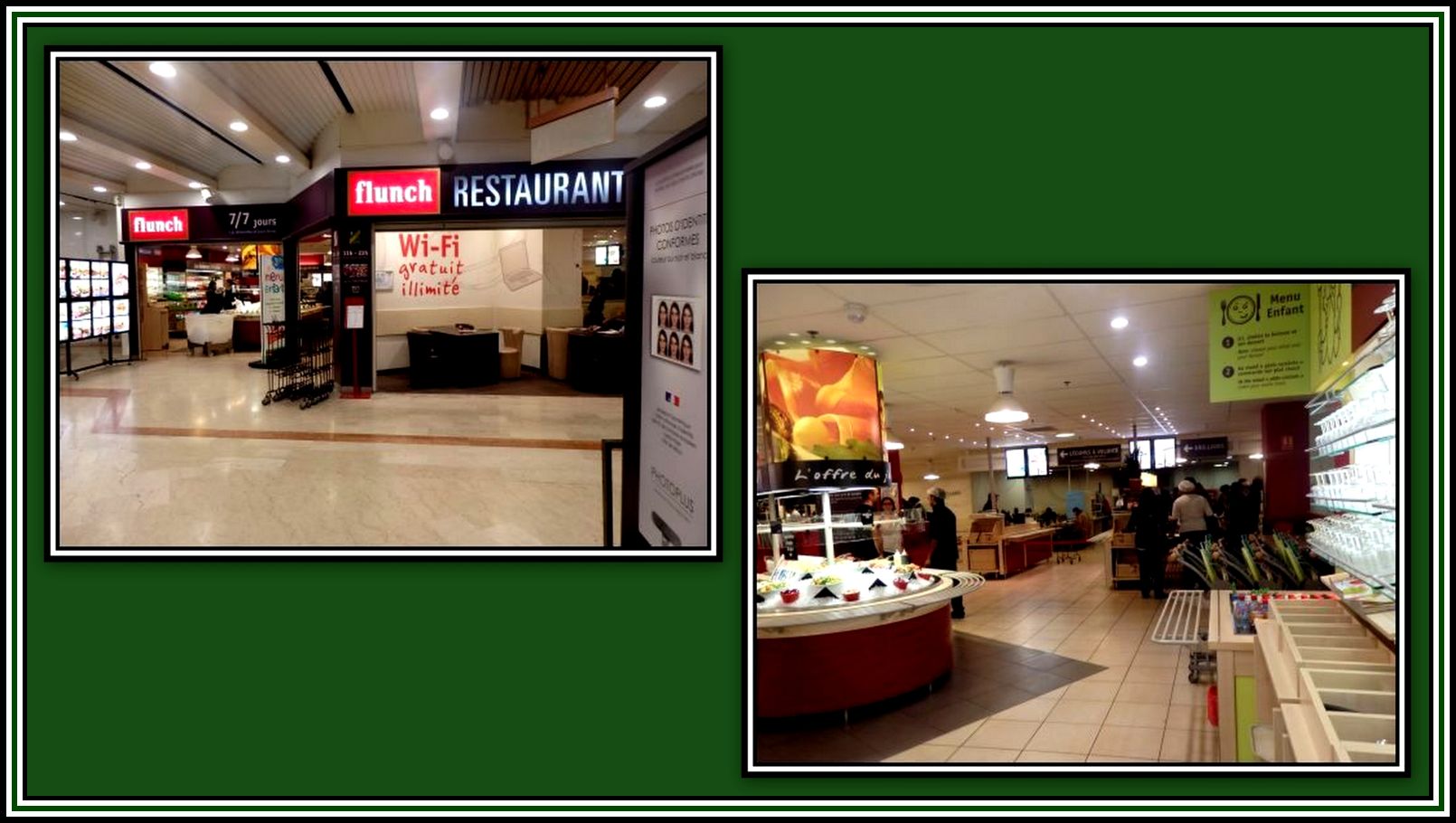
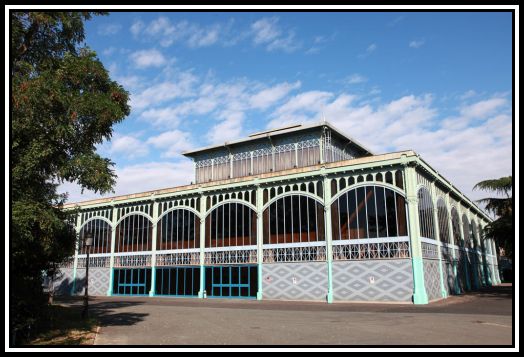

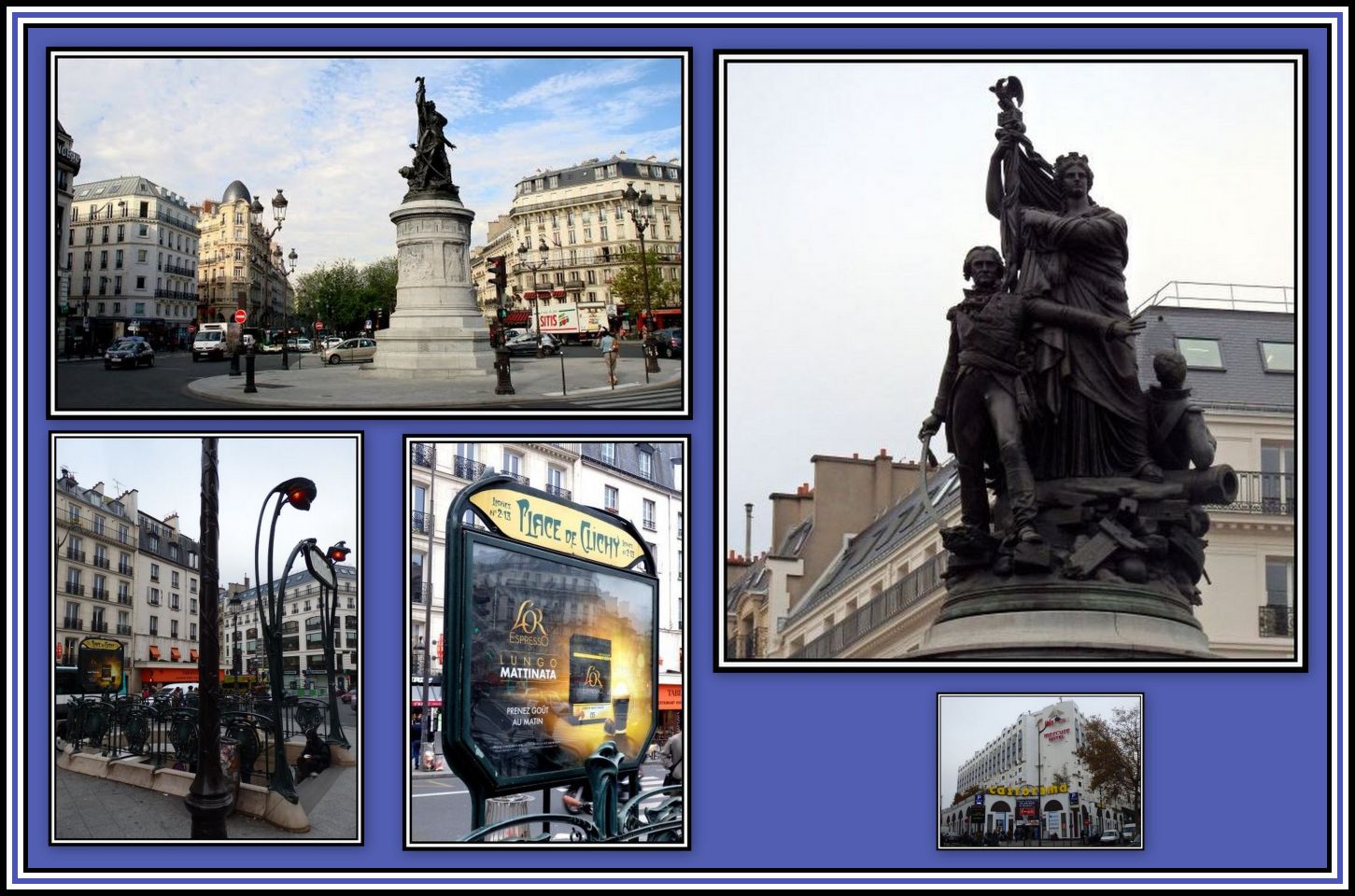
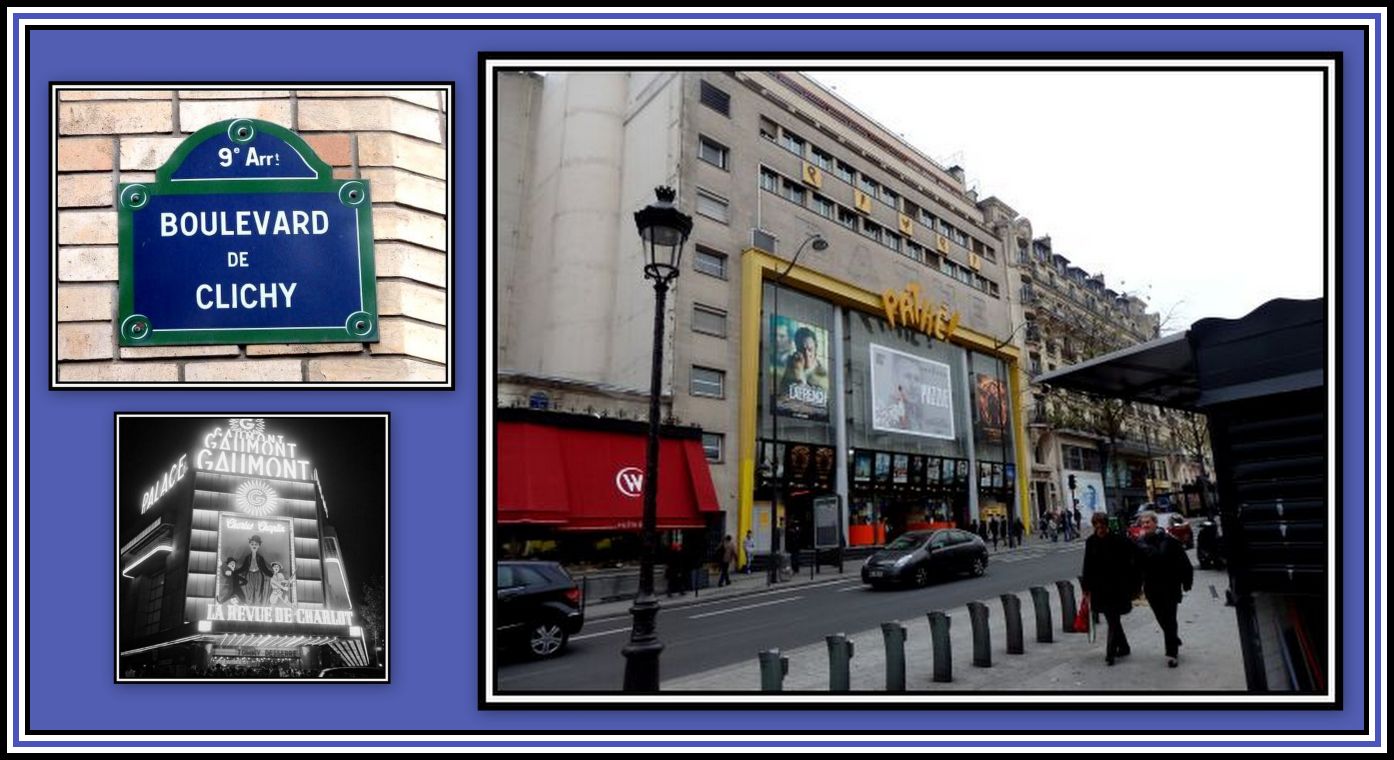
I AM SEARCHING FOR INFORMATION ABOUT CHRISTIE ORGAN(S) #2654 AND #2655.
YOU MAY BE INTERESTED IN MY WEBSITE http://www.theatreorgansaust.info which has been in existence since 2006 and covers
every theatre organ in Australia and New Zealand (except recently found information about a Christie organ in St. Stephens Presbyterian
Church, Lower Hutt, New Zealand) pipework of which is now finding itself into a 4 manual organ being built by South Island Organ
Company in St. John’s Anglican Church, Gordon, Sydney NSW Australia.)